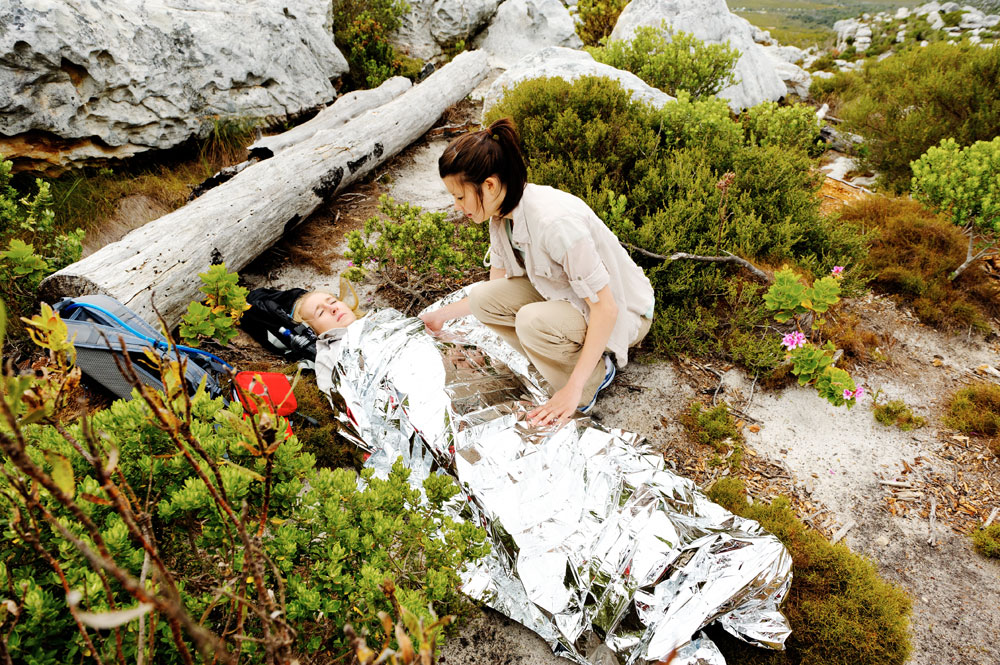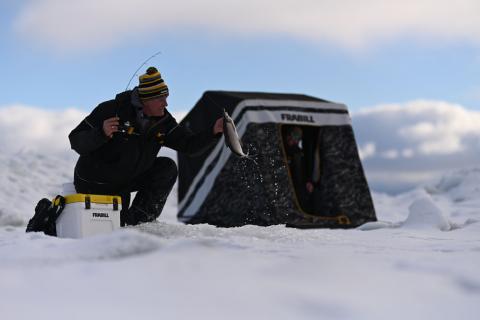Before any big hiking trip, planning and preparation are essential to ensure you’re equipped with all the required gear and supplies. You should also have an emergency preparedness plan you can quickly execute in the event of an emergency.
Even with careful planning and an abundance of caution, accidents happen. Whether you’re hitting the trails by yourself or with others, make sure you have a hiking emergency evacuation plan, so you know what to do when a crisis strikes. Here is what you should be prepared to do in a hiking emergency.

Seek Training Before Your Trip
If you’re unfamiliar with basic first aid or could use a refresher, consider taking a first aid course or CPR training before you go on your hike. First aid training and certification usually takes just a few hours and could mean the difference between life and death.
Ensure you have a basic understanding of caring for burns, lacerations, bites and stings, allergic reactions, and simple breaks. You should also know what to pack in a first aid kit for your hiking trip. Having these necessary skills could save your life or others’ lives on your journey and future hikes down the road.
Check and Plan for the Weather
It’s especially important, when you’ll be spending time outdoors, you check the weather forecast and plan accordingly. If inclement weather is expected and the location you’ll be hiking in has issued warnings to the public, it’s essential to be flexible with your route and itinerary. If the conditions are unsafe, you should be prepared to postpone or reschedule your trip. Longer hiking trips can be riskier, so it’s best not to roll the dice with severe weather.
Even if there is no severe weather on the horizon and you’re likely only to encounter mild precipitation or temperatures, it’s still important to pack for any weather event. Rain can occur unexpectedly, and temperatures can drop quickly overnight. So, it’s best to come prepared with waterproof gear, such as a rain jacket and waterproof hiking boots or shoes, as well as warm base layers you can easily add or remove, depending on the temperature.
Tell Others Where You Are
Once you’ve planned your hiking trip and determined the weather is safe enough to do the hike, alert loved ones of your plans before you begin your trek. Especially if you’re hiking by yourself, you should tell others your intended route and ETA and provide them with your contact information. This way, others have a sense of your whereabouts and can work with emergency personnel to locate you if something goes wrong.

Pack the Essentials
Whether you go the trails alone, with a buddy, or with a group, you should always pack the essentials. While the number of supplies depends on the length of your trip, you should equip yourself with the following items:
- A lightweight hiking backpack
- Weather-appropriate clothing, including a waterproof jacket, moisture-wicking shirts, and quick-dry pants
- Waterproof hiking footwear with high-grip soles
- Food, such as jerky, trail mix, and other nutrient-dense options
- Water or a water purification kit
- Navigation tools, including a map, compass, or GPS locator
- First aid kit
- Survival knife or multitool
These days, most hikers typically carry a smartphone while hiking, which usually has GPS capabilities. However, you shouldn’t rely solely on your smartphone, as batteries can die quickly in the wilderness and the GPS tracking system may not have a signal in a dense forest.
In addition to these tools, consider bringing a satellite messenger or personal locator beacon (PLB). When activated, a PLB will send out a distress signal and identification code. With both tools, emergency services will be alerted to your location immediately.
Once you’ve identified and gathered all the items you’ll need, learn how to pack a hiking backpack to expertly and efficiently store all your supplies.

Create an Emergency Action Plan
In addition to packing all the right gear, planning for inclement weather, and making smart decisions along your hike, you should prepare for likely emergencies by developing a plan so you can act quickly in a crisis.
Even with the best intentions, accidents can happen. When they do, it’s essential to keep a level head and be ready to jump into action. By putting together an emergency evacuation plan and practicing it, you’ll be better prepared and know what to do in a crisis.
Your hiking emergency plan should include actions to take in the event someone else or you become injured or lost. It should also include emergency numbers to call or SMS to get help. If you are in the U.S., call 9-1-1. To place an emergency call in Europe, call 1-1-2. In Australia, call 0-0-0. If you are unsure of the emergency contact details in your location, research and create a list of numbers before your leave on your expedition.
If you don’t have cell service or satellite messenger, it’s essential to carry a flashlight or whistle so you can make an emergency distress signal. Which contact method you use depends on if you have cell service, your communication devices are working, and if you’re physically able to contact help. Make sure you are well-prepared for each scenario.
- Injured Person
When an injury happens, you should assess the nature of the damage. For minor injuries that can be treated with the first aid kit, use your first aid supplies to clean and cover the wound. If the injury is more serious and someone else or you are incapable of walking, you will need to initiate one of the communication methods to call for help and evacuate.
If applicable, assess the area for potential dangers, remove hazards, or move the injured person to a more secure location. If the person has a possible spinal injury, never attempt to move them.
- Lost Person
If you or someone becomes lost, you should immediately contact emergency services and report the last known location, including GPS coordinates, if you have them, as well as the type and colors of clothing you or the person are wearing and any medical conditions.
If you don’t have a cell signal, try to flag down other hikers and ask them to notify park rangers. If there are no other hikers present or they don’t have cell service, try one of your other planned communication methods.
Final Thoughts
A crisis can strike at any time on the trails. If you’re planning a hiking trip, make sure you have an emergency evacuation plan in place and you practice before you set out on your hike. This should include preparing for bad weather, notifying others of your location, packing the essential gear, and having a plan with clear steps you can easily execute in the event of an emergency.
Mossy Oak has a huge range of high-performance outdoor gear that can keep you warm and dry while hiking. Explore our collection of men's, women's, and youth apparel online.






























